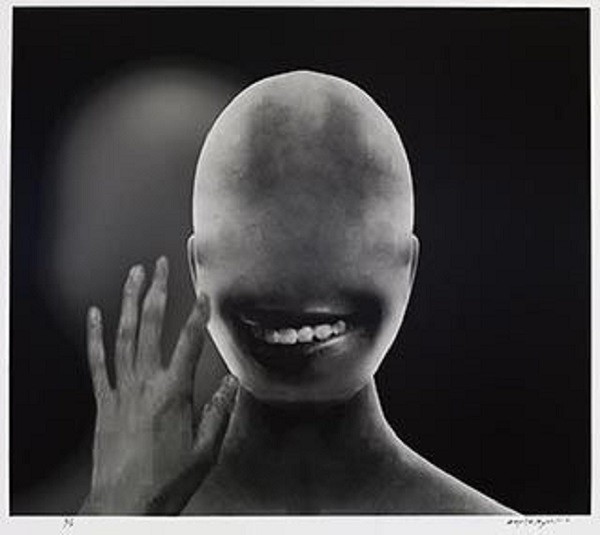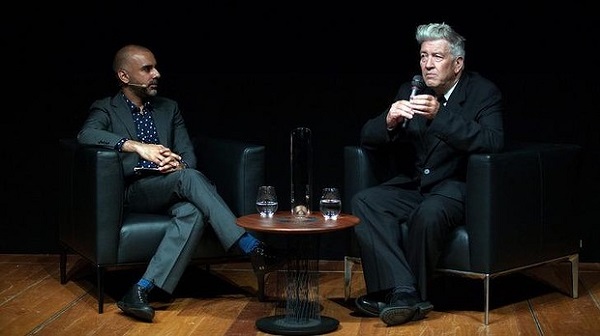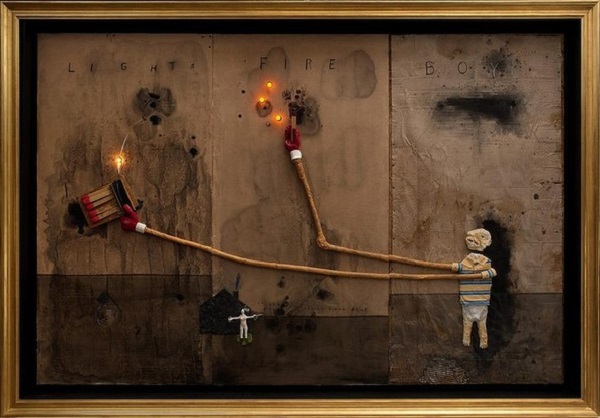“A lot more happens when you open yourself up to the work and… act and react to it.” – David Lynch
Die-hard Mulholland Drive fans will flock over the next few weeks leading up to the arrival of David Lynch on Australian shores, but it won’t be for the distinctly dark cinema that he is best known for. The unveiling of Brisbane’s GOMA exhibition ‘David Lynch: Between Two Worlds’ on March 13, curated by Jose Da Silva, will be a very different kind of artistic endeavour for the enigmatic creator, best known for his art-house style films, such as The Elephant Man and series Twin Peaks, and will see him explore his other passion – painting.
Michelle Ives from Fashion Industry Broadcast caught up with GOMA Senior Curator and Head of Australian Cinemathique, Da Silva, during the week to talk about his work with David and how his own Australian style has been injected into the work…

“For David everything begins with his love of painting and it’s painting that best represents his creative continuum,” he said. “His approach is always about action and reaction, fast and slow, as well as emphasising the organic and visceral possibilities of the painting’s surface.
Sometimes he describes himself as a bad painter, but then he’s a pretty modest guy. What most people don’t realise is that he trained as a painter in the mid-1960s and it was through his experiments with an expanded field of painting and sculpture that he became interested in animation and ultimately film-making.”
Lynch has stated that this exhibition will be a “sort of” renaissance for him – publicly at least – given that he has been a painter his entire life. “I’ve been a painter all through the years and all I ever really wanted to do in the beginning was be a painter,” David said. “So I kept painting but I never showed too much.” A few sporadic exhibitions throughout the years in LA, New York and even Japan have been very “hit and miss”, and until now, never on a large scale. According to Director Chris Saines, the Queensland’s Gallery of Modern Art has been working very closely with the David to bring his vision to life, and Australian shores, in 2015.

“David Lynch has maintained a studio practice that reflects a fascination with industry and organic phenomena, subconscious drives and a desire to look beneath the surface, concerns that also permeate his cinema,” he said.
According to Da Silva, David is also an ideas man and “he’s got plenty of them!”
“There are ideas for painting, drawing, photography, printing making, sound, video and even industrial design. You could describe his practice as process-based, wherein one idea leads to another — even the smallest fragment can spark his working process that leads effortlessly from one medium to the next.
There’s many things distinctive qualities to his work. From his nightmarish evocations of the mundane to his surreal appreciation of decay, his fascination with the human psyche and use of language to create a certain mood, David’s work appears mysterious, claustrophobic and suspended in time.”

Clearly Lynch is not a token painter and sculptor, then. “Even on a basic visual level, you understand how the same person is making these films and making this work,” Da Silva continues. “Unlike some filmmakers who dabble in other media, his work across other media has been central to his ideas about his broader cinematic work.”
So, as a senior curator, how has Da Silva’s work been injected in the exhibition?
“David has been enormously generous with his time and has backed the vision for this exhibition 100%. His team in LA have been equally generous in providing access to his archives and helping bring everything together. It’s been a privilege to work with an artist who has such strong and confident approach to their work.
As a curator I always feel a tremendous responsibility in helping shape an exhibition that stays true to an artist’s intentions and wishes. I’ve tried in this instance to do a retrospective that dispenses with the conventions of arranging works chronologically, by medium or in a strictly thematic arrangement. Rather, works are arranged around three intersecting ideas – man and machine, the extra-ordinary and psychic aches – with each gallery space creating a distinct mood and atmosphere.
While the selection is quite idiosyncratic and reflects how I have personally responded to David’s work, I hope that I’ve created an experience which isn’t overdetermined by my curatorial approach, but that allows audiences to engage openly with David’s vast and compelling practice,” he said.

You can buy tickets to visit Brisbane’s GOMA exhibition ‘David Lynch: Between Two Worlds’ on March 13, curated by Jose Da Silva, at http://www.qagoma.qld.gov.au/exhibitions/upcoming/davidlynch.







